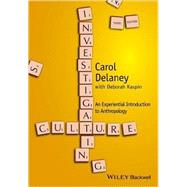- Offers a refreshing alternative to introductory anthropology texts by challenging students to think in new ways and apply cultural learnings to their own lives
- Chapters explore key anthropological concepts of human culture including: language, the body, food, and time, and provide an array of cultural examples in which to examine them
- Incorporates new material reflecting the authors’ research in Malawi, New England, and Spain
- Takes account of the latest information on such topical concerns as nuclear waste, sports injuries, the World Trade Center memorial, the food pyramid, fashion trends, and electronic media
- Includes student exercises, selected reading and additional suggested readings








